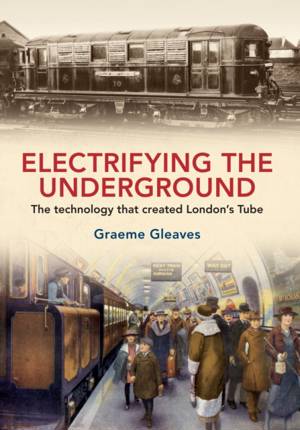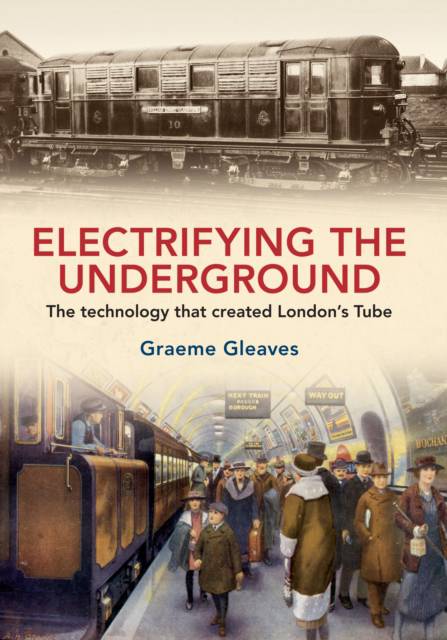
- Afhalen na 1 uur in een winkel met voorraad
- Gratis thuislevering in België vanaf € 30
- Ruim aanbod met 7 miljoen producten
- Afhalen na 1 uur in een winkel met voorraad
- Gratis thuislevering in België vanaf € 30
- Ruim aanbod met 7 miljoen producten
Zoeken
Electrifying the Underground
The Technology That Created London's Tube
Graeme Gleaves
Paperback | Engels
€ 23,95
+ 47 punten
Omschrijving
It was a public transport revolution. London had led the world in the development of a subterranean railway system. The first sub-surface lines, constructed by the cut-and-cover method, were operated with steam locomotives. In theory the tunnels and stations were ventilated into the outside air, but in practice they became dingy, miserable, smoke-filled spaces. As one early traveller recorded in his journal, 'I had my first taste of Hades today ...the atmosphere was a mixture of sulphur, coal dust and foul fumes'. The railway companies desperately needed to clean up their act. It was only with the arrival of exhaust-free electric traction - combined with improvements to the tunnelling shield, pioneered by Sir Marc Brunel - that the engineers were able to tunnel far deeper to create London's 'Tube' system. Graeme Gleaves traces the development of the Underground from the early years and through the introduction and development of the electrified system
Specificaties
Betrokkenen
- Auteur(s):
- Uitgeverij:
Inhoud
- Aantal bladzijden:
- 128
- Taal:
- Engels
Eigenschappen
- Productcode (EAN):
- 9781445622033
- Verschijningsdatum:
- 15/02/2014
- Uitvoering:
- Paperback
- Formaat:
- Trade paperback (VS)
- Afmetingen:
- 165 mm x 234 mm
- Gewicht:
- 226 g

Alleen bij Standaard Boekhandel
+ 47 punten op je klantenkaart van Standaard Boekhandel
Beoordelingen
We publiceren alleen reviews die voldoen aan de voorwaarden voor reviews. Bekijk onze voorwaarden voor reviews.








